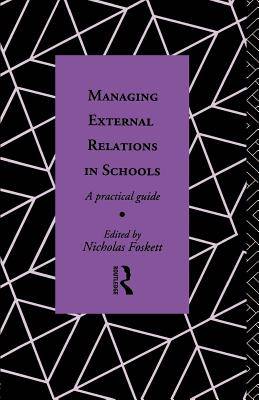
- Afhalen na 1 uur in een winkel met voorraad
- Gratis thuislevering in België vanaf € 30
- Ruim aanbod met 7 miljoen producten
- Afhalen na 1 uur in een winkel met voorraad
- Gratis thuislevering in België vanaf € 30
- Ruim aanbod met 7 miljoen producten
Zoeken
Managing External Relations in Schools
A Practical Guide
€ 44,45
+ 88 punten
Omschrijving
The educational environment of the 1990's is characterized by increasing independence for schools in a more competitive climate. This book is intended to be of direct practical help to those involved in ensuring the long-term wellbeing of schools for the benefit of the pupils they educate. Its aim is to provide both an overview of the issues relating to external relations in schools and an insight into the organizational and planning systems that can be applied to dealing with them. In particular it focuses on the overall field of external relations and on its individual facets, ranging from the management of links with the LEA, liaison with parents and issues in primary/secondary school links to school identity and marketing. The book is divided into four integrated parts which examine approaches to the management of external relations, links with the educational environment, links with the community, and external relations. Managing External Relations in Schools places the new challenges arising from the Education Reform Act and LMS into a broad context, which is much wider than the common concept of public relations and marketing. This will enable teachers and school managers to consider more systematically the management needs of the institution's external links. Each of the contributors is an expert in his or own field and has written from the perspective of real challenges and issues facing schools. Ideas on enhancing efficiency and effectiveness in all spheres of external relations underpin the themes in the book.
Specificaties
Betrokkenen
- Uitgeverij:
Inhoud
- Aantal bladzijden:
- 248
- Taal:
- Engels
- Reeks:
Eigenschappen
- Productcode (EAN):
- 9780415068345
- Verschijningsdatum:
- 29/10/1992
- Uitvoering:
- Paperback
- Formaat:
- Trade paperback (VS)
- Afmetingen:
- 140 mm x 216 mm
- Gewicht:
- 322 g

Alleen bij Standaard Boekhandel
+ 88 punten op je klantenkaart van Standaard Boekhandel
Beoordelingen
We publiceren alleen reviews die voldoen aan de voorwaarden voor reviews. Bekijk onze voorwaarden voor reviews.










